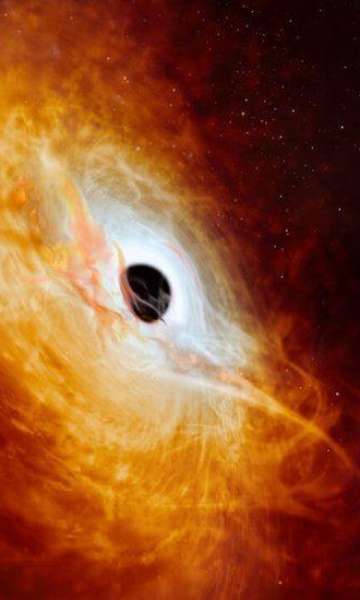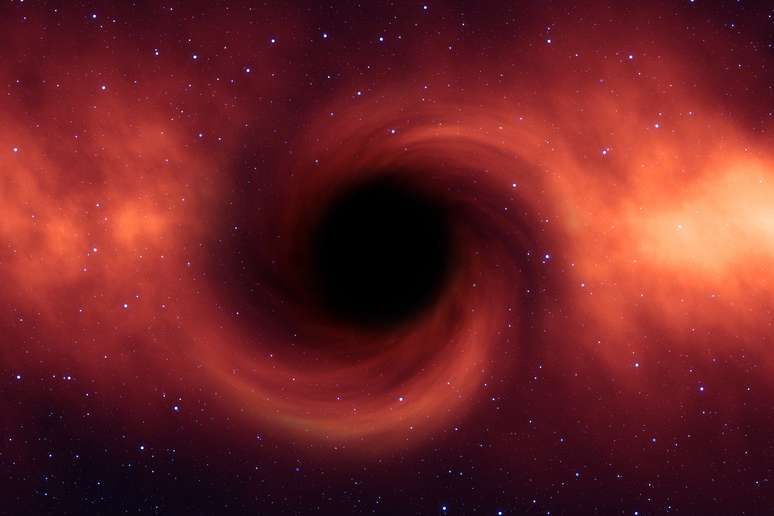Dubbed BH3, astronomers on the Gaia mission accidentally found the most massive black hole in the Milky Way
Summary
Astronomers have discovered a stellar black hole of 33 solar masses in the constellation of Aquila, extremely close to Earth (2 thousand light years). It was necessary to use data from several ground-based observatories to confirm the discovery.
OR Black hole most massive star in Milky Way It was identified by astronomers using data from the European Space Agency’s (ESA) Gaia mission, as it imposes a strange “wobble” motion on the star orbiting it.
According to information gathered by the European Southern Observatory’s (ESO) Very Large Telescope (VLT) and other observatories, the mass of the black hole is 33 times that of the Sun.
Stellar black holes form from the collapse of massive stars. Until then, those spotted in the Milky Way had, on average, about 10 times the mass of the Sun.
OR Cygnus X-1 it was the most massive stellar black hole known in our galaxy, with 21 solar masses, which makes this new discovery even more exceptional.
In addition to its impressive mass, the black hole is also extremely close to Earth: just 2,000 light years away, in Constellation of Aquila. It is the second closest black hole to Earth and has been nicknamed Gaia BH3 or BH3.

What is the closest black hole to Earth?
“No one expected to find a huge black hole lurking nearby, undetected until now,” said Pasquale Panuzzo, a member of the Gaia collaboration and astronomer at the Paris Observatory, part of the French National Center for Scientific Research ( CNRS). “This is the kind of discovery you make once in your research lifetime.”
New evidence
To confirm the discovery, the Gaia collaboration used other data from ground-based observatories, such as the Ultraviolet and Visual Echelle Spectrograph (UVES) instrument, mounted on ESO’s VLT, located in the Atacama Desert, Chile.
With these observations it was possible to reveal the main properties of the star companion, which, together with the data already collected by Gaia, provided the information necessary for astronomers to accurately measure the mass of BH3.
Astronomers have already found massive black holes like this one in others galaxies, using other types of methods to detect them. They theorized that the heavenly bodies they can form from the collapse of stars that have few elements heavier than hydrogen and helium in their chemical composition.
Commonly called metal-poor stars According to scientists, they lose less mass over the course of their lives. For this reason, after their death they end up accumulating more material to produce massive black holes, but evidence of the direct connection between metal-poor stars and massive black holes was still lacking.
Paired stars tend to have similar chemical compositions, meaning BH3’s companion holds important clues about the star that collapsed to form this unique black hole.
The UVES data shows that both stars were metal-poor, proving this connection with the astronomers’ theory.
The research was led by Panuzzo and titled “Discovery of a Dormant 33-Solar-Mass Black Hole in Gaia Pre-Launch Astrometry”, published in Astronomy & Astrophysics.
“We took the exceptional step of publishing this paper based on preliminary data before the next Gaia launch, due to the unique nature of the discovery,” says co-author Elisabetta Caffau, also a member of the Gaia collaboration.
According to the collaboration, making the data available early will allow other astronomers to start studying the black hole now, as full data release was expected in late 2025.
Source: Terra
Rose James is a Gossipify movie and series reviewer known for her in-depth analysis and unique perspective on the latest releases. With a background in film studies, she provides engaging and informative reviews, and keeps readers up to date with industry trends and emerging talents.







